I could tell you about all the VR headsets and AR glasses and theoretical apps I tried this year that were supposed to define 2022’s vision of the metaverse. Instead I’ll just tell you about the best thing I did this year, and the thing I miss the most: Doing improv acting workshops with a little group of other performers in VR.
We gathered every week in an app called Altspace VR, invited by a brilliant interactive acting teacher named Jeff Wirth. We met every Monday, exploring ideas in performance with avatars. I put on my Quest 2 headset in my dusty little home office and met with friends I’d never seen in person.
The class ended too soon, and when I look back, I remember these sessions like we were really together. That’s what the metaverse is to me. It’s a real thing. We’re just not all there yet.
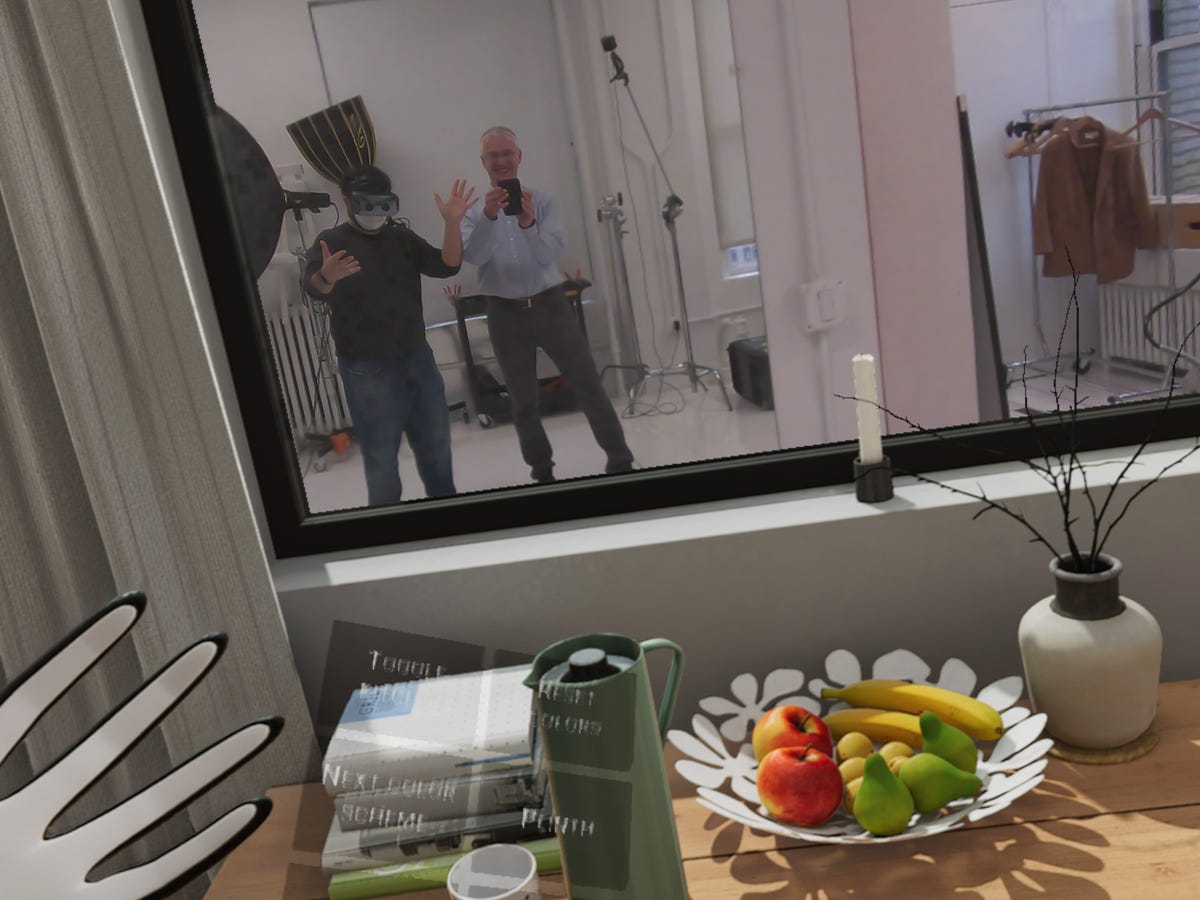

This is a capture of me in a Varjo XR-3 mixed reality, in a virtual kitchen, looking at myself through a window into the real room.
Varjo2022: A brief look forward, but only brief
More recently, standing in a kitchen, changing countertops and looking at cabinet finishes, I walk over to the window. I see a blank white room outside, along with a mirror. I see myself, with a VR headset on. I’m standing in a virtual room, suspended in a real room with mixed reality, wearing a Varjo XR-3 headset. This jarring moment represents the future — yet still the unrealized potential — of what could be coming next.
I thought 2022 would be a big year for VR and AR, and even the metaverse, a buzzword concept that’s a stand-in for how the world’s internet and virtual communities, including social media, could evolve. It wasn’t. An economic downturn, crypto’s collapse, waves of tech layoffs, and the delay of many of the most-expected VR/AR devices turned this year around fast.
Now 2023 is looking to be the big year for immersive “extended reality” (aka XR). Apple’s long-expected headset should arrive, with expectations that it’ll rattle the landscape. Meta’s Quest 3 is confirmed. The PlayStation VR 2, a headset I’ve already tried, is coming in February. And who knows what other surprises the new year will bring?
As far as the metaverse goes, it’ll only move as far as mass social adoption takes it. I’m more interested in the hardware that’ll power such tech, because until VR and AR headsets take their next leap, it’s still going to be a challenge to expect people to spend more time in them than they already are. But this is what 2022 showed me, and where it points to 2023.
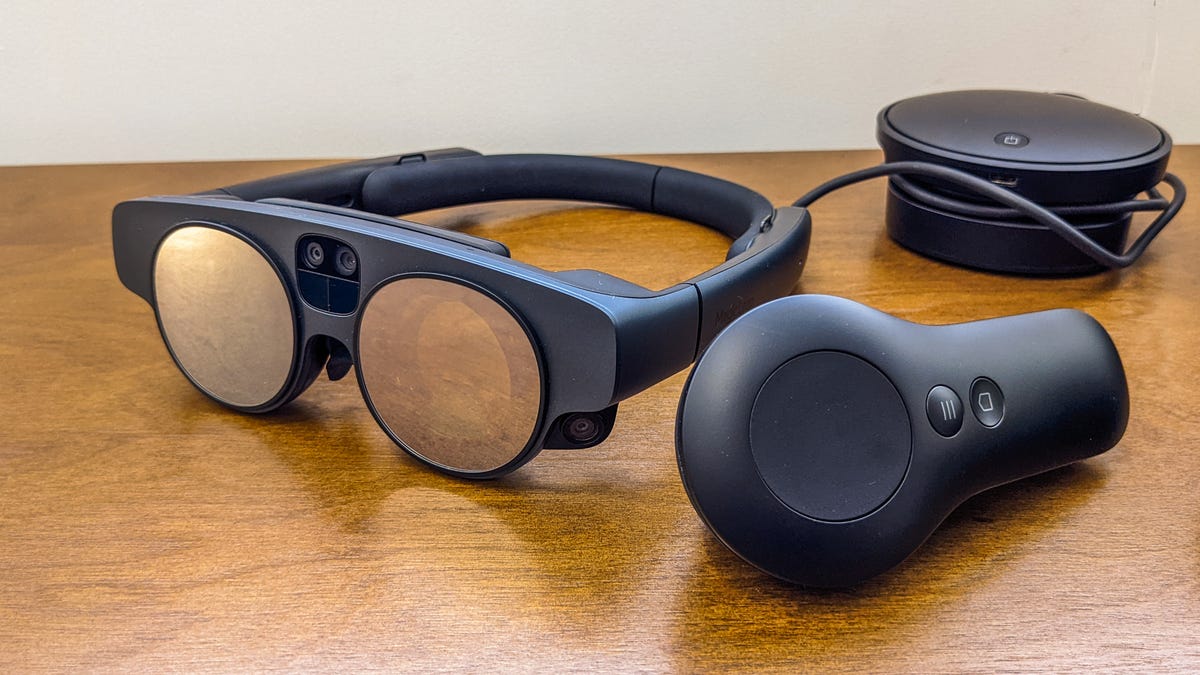

The Magic Leap 2, an AR headset I tried back in March.
Scott Stein/CNETMagic Leap 2, Meta Quest Pro: A mixed-reality future coming
The two headsets that made the biggest impact on me this year bookended 2022: Magic Leap 2 and Meta Quest Pro. They are, in many ways, mirror products. One is trying to approach the future of mixed reality from the AR side; the other is coming to mixed reality from the VR side. Both are trying to become more comfortable, and more reliable. Both show that there still is no ideal form for The Next Headset yet, but we’re slowly getting closer to a consensus on how the devices might do it.
The Magic Leap 2, a follow-up to the original Magic Leap headset that debuted back in 2018, has pivoted from a device targeted at the masses to a headset for business. The hardware is considerably better, and it maps overlaid, glowing virtual objects onto the real world with a greater field of view. It also, amazingly, dims out the world – a bit like a pair of sunglasses. But it’s not the ideal set of AR glasses: it runs on a more powerful dedicated processor connected to a belt-mounted mini-computer that it’s tethered to, and its single controller is fine for basic controls but not necessarily for full immersive interaction.
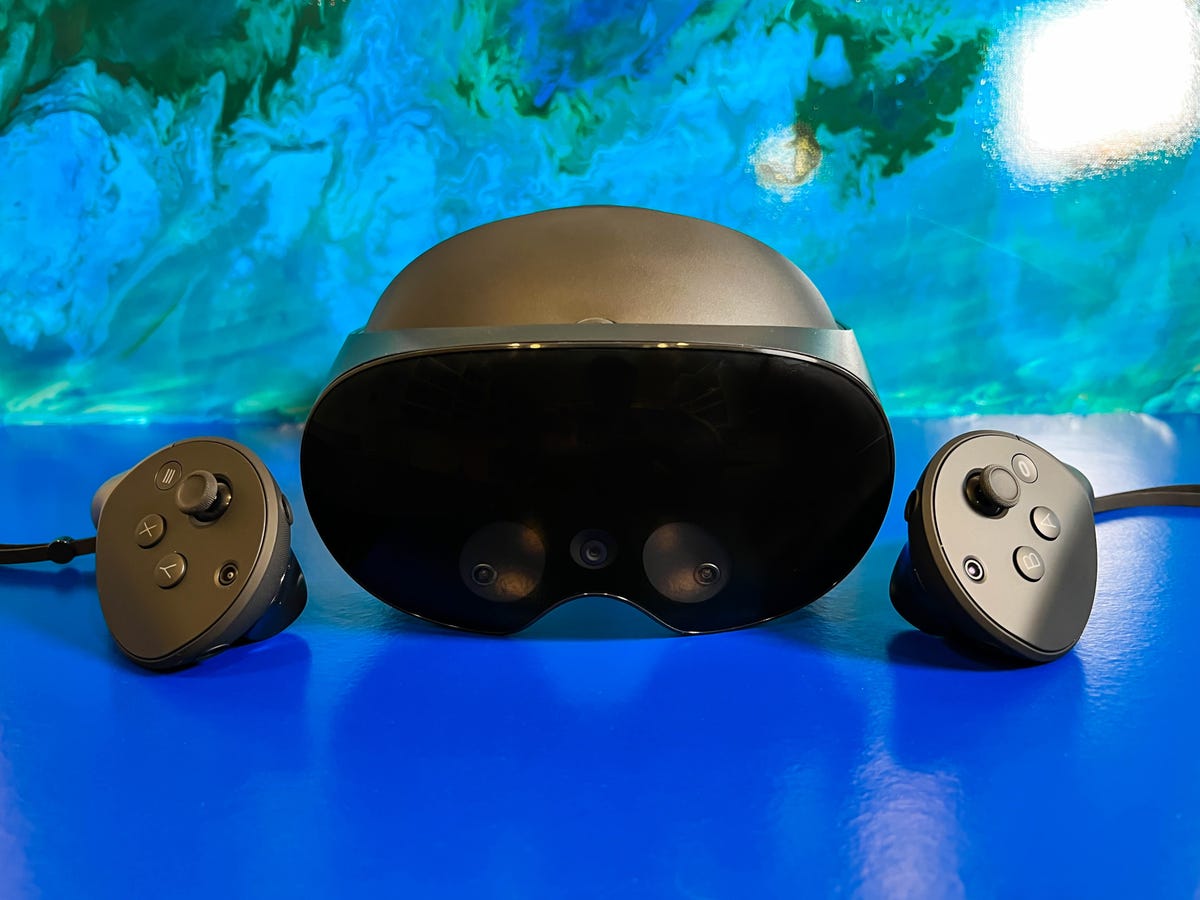

The Meta Quest Pro, a VR headset that blends mixed reality, feels like an AR device.
Scott Stein/CNETThe Meta Quest Pro really isn’t that big a change from the two-year-old Quest 2, and certainly isn’t worth the extra $1,100 for anyone who isn’t a developer. But its improved features eye- and face-tracking, and better mixed reality with color passthrough cameras — are indicators of what will show up on many VR headsets (and AR ones) in 2023 and beyond.
The Quest Pro’s mixed reality is what really surprised me. It’s not great, but it’s similar in spirit to what the Varjo XR-3 headset can do. And the Pro, when it’s on my head running a mixed-reality app, reminds me more of AR headsets like the Microsoft HoloLens 2 than a VR headset. The way I can see the world and also see around the display through my peripheral vision feels like some sort of glasses-like AR experience, for a moment, even if it’s not.
No one is able to make good AR glasses yet. Instead, everyone’s trying to get a bit closer as best they can.
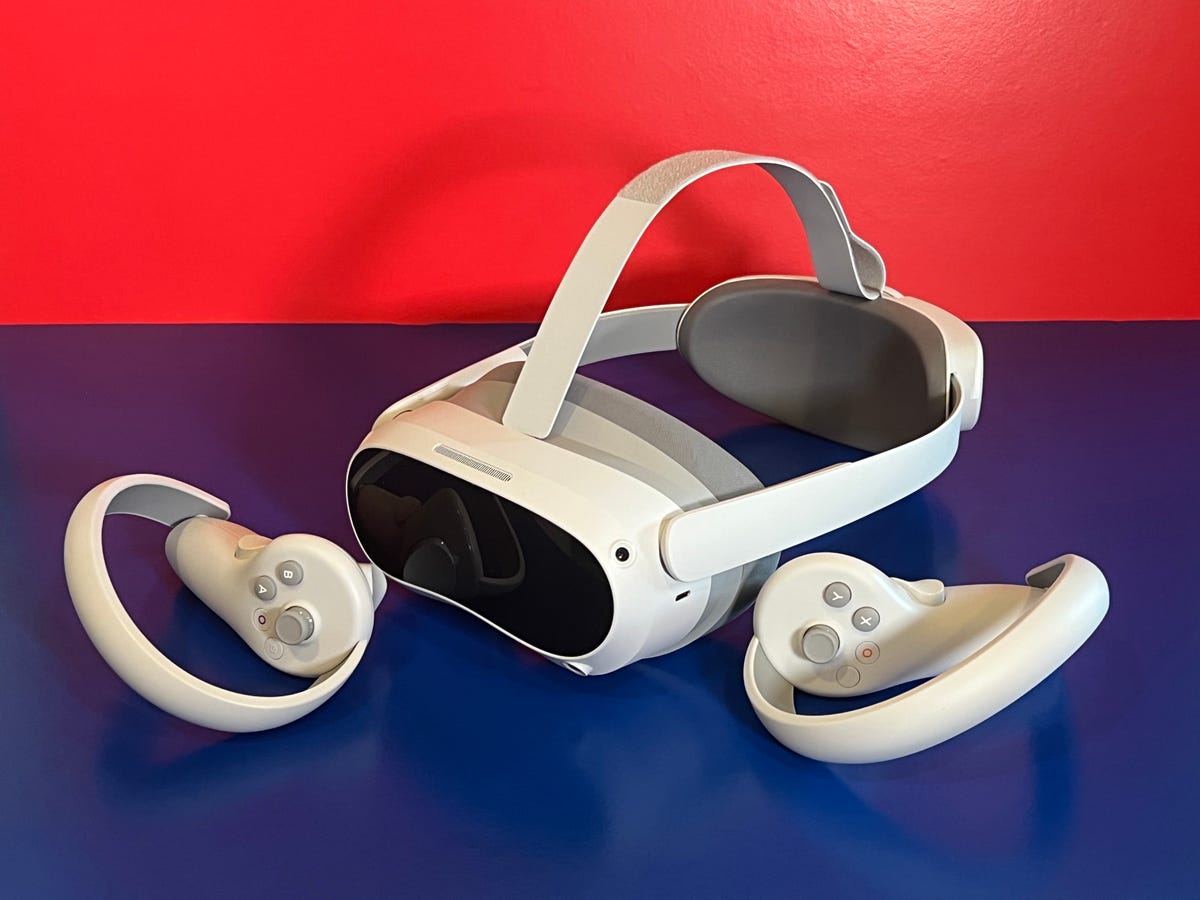

The Pico 4 VR headset looks to go against the Meta Quest 2. It largely succeeds.
Scott Stein/CNETExpect more competition for Meta
The Pico 4 VR headset, made by TikTok parent company ByteDance, feels like a clone of the Meta Quest 2 but with some improvements. What’s really surprising is its price undercuts Meta’s. ByteDance did this intentionally, and likely at a loss, but it shows that somewhat affordable standalone VR headsets could be a much more common thing going forward. Pico already has them. Some of Qualcomm’s device partners using the company’s ubiquitous VR/AR chips will have them, including, likely, HTC Vive, which is already teasing a mixed-reality headset for CES. Valve is rumored to have a standalone VR headset of its own, codenamed Project Deckard, that could make a big gaming splash. Pimax, a manufacturer of VR headsets, has a combination gaming handheld/VR headset called the Pimax Portal expected for early 2023, too.
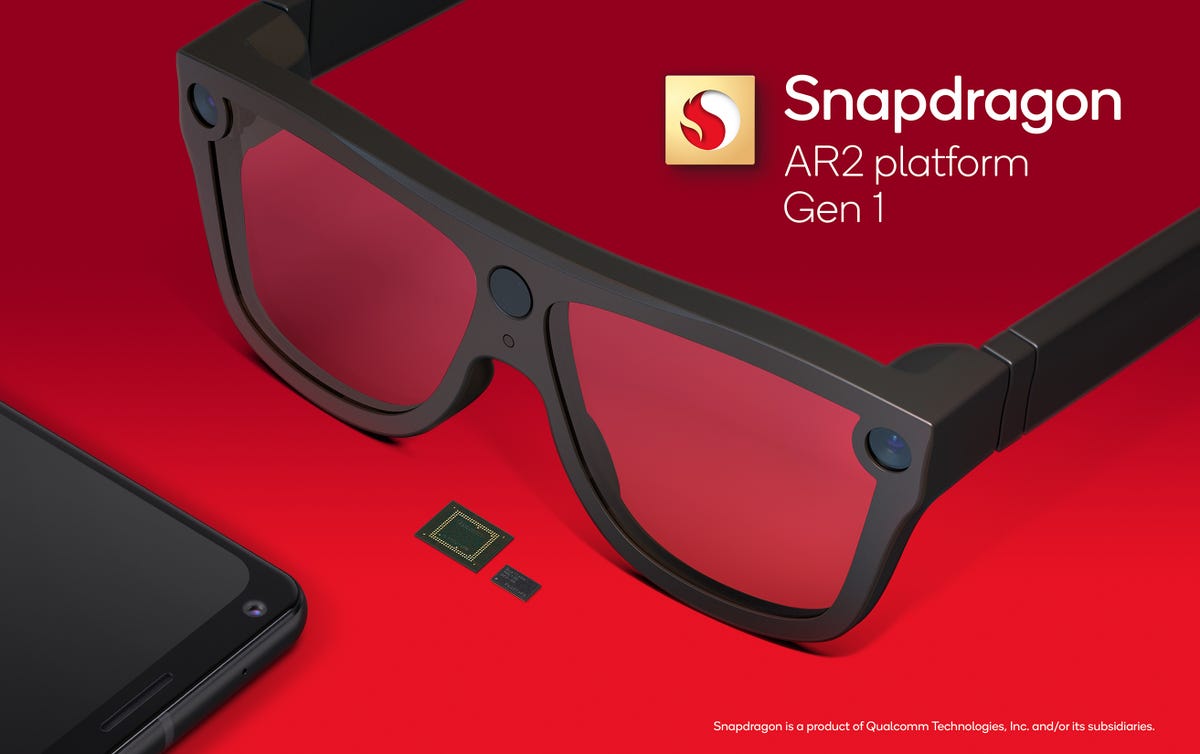

The AR2 Gen 1 looks to power compact AR glasses coming in the next few years.
QualcommWhat about phone-connected headsets?
Qualcomm has been promising a wave of phone-tethered AR and VR devices for years, and they’ve been starting to emerge. HTC’s Vive Flow, released in 2021, was an attempt at a smaller pair of phone/VR glasses. Qualcomm’s latest initiatives for smaller AR glasses arriving between 2023 and 2025 can work wirelessly with phones. It’s probably pretty likely that the powerful phones we carry with us will help do some of the heavy lifting for smaller headsets in the next few years. Apple could be planning that approach with its expected headset in 2023.
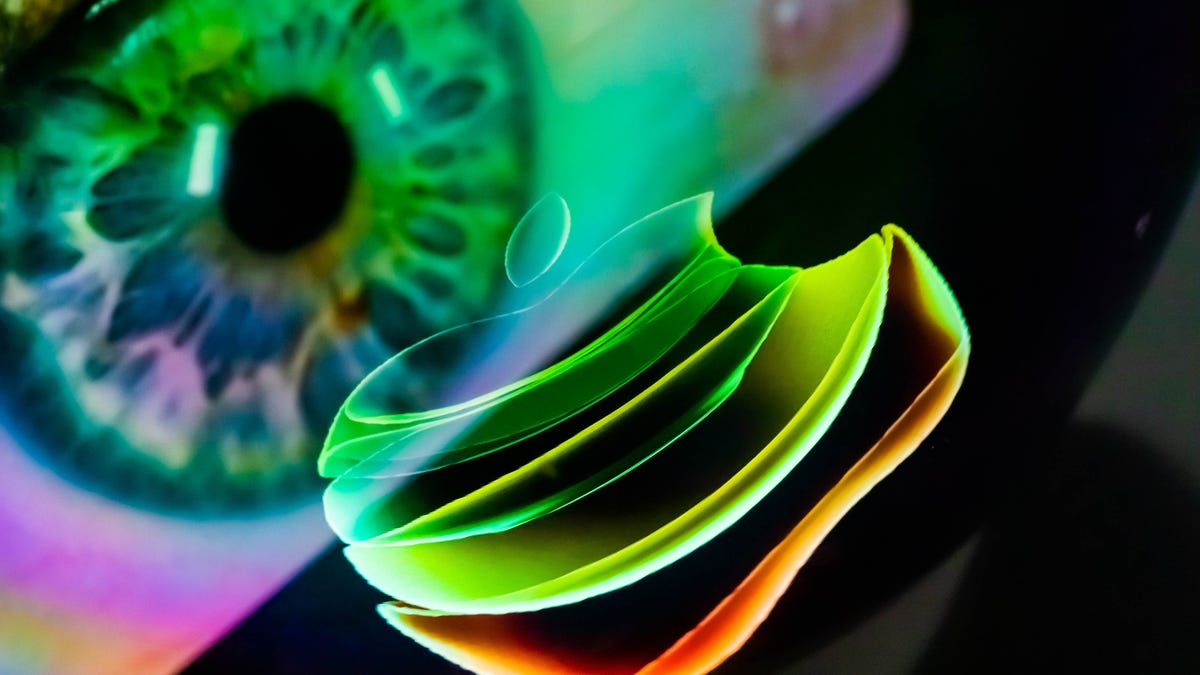

Apple’s expected to have a VR/AR device in 2023. So, what will it be like?
James Martin/CNETHere comes Apple
Apple’s long-expected headset, likely to be VR with mixed-reality capabilities similar to what the Quest Pro provides, could shake up the landscape like nothing else since the Oculus Rift. Apple’s products tend to disrupt and take over categories: the iPhone, the iPad, the Apple Watch, AirPods. Can Apple do the same with VR and AR? It’s a far greater challenge, especially with the technical questions and the expected price (well over $1,000, possibly several thousand), as well as the recession climate we’re in globally.
Even more interesting to me is who else comes out of the woodwork alongside Apple. Google has been laying low with AR and VR for years since its discontinued Google Daydream platform, but recent efforts like Project Starline and assistive smart glasses show there’s exploration going on. Samsung hasn’t had a new AR or VR device in years, either, even though the company was a VR pioneer with Gear VR and tends to jump into markets early with bold experimental products. Will 2023 be a year for showing surprise products?
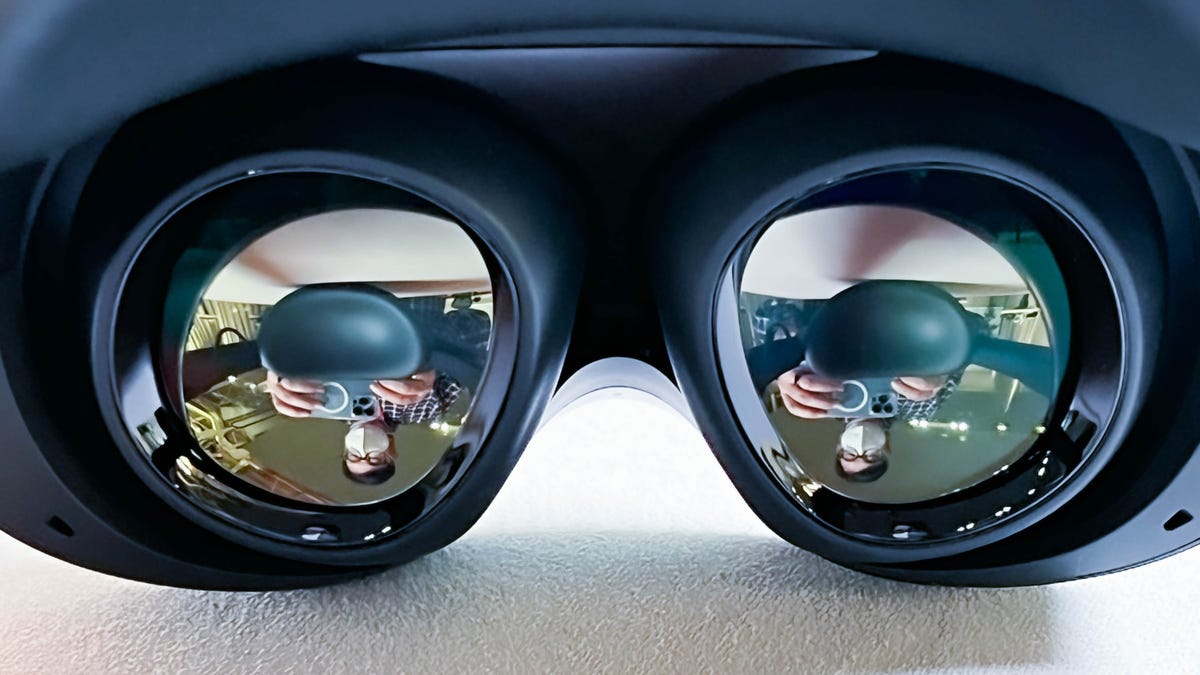

The Quest Pro fits over my glasses. But it doesn’t mean I use it all the time.
Scott Stein/CNETWill people care enough to wear them?
As I ask myself whether VR headsets really have a future in people’s homes, I’m distracted by my 14-year-old son, who’s literally playing a VR game on the Quest 2 right next to me. VR’s already here for many people. It’s hard to appreciate that. It’s not “what if,” it’s “what else can I do?”. VR headsets are mostly clever, limited-use game consoles for most people. Meta’s tried to flex the Quest to be more. Not everyone’s been interested, and the Quest’s not fully up to the challenge.
The next wave of VR and AR headsets need to be better at what they do: to be better game consoles; have more comfortable displays, more useful controllers and ways to interact; be more interconnected with the apps and devices we already have; be more portable and more accessible.
They need to work better with prescription glasses (I find many headsets don’t fit with my glasses, or can’t accommodate my prescription). New apps need to emerge that can show what a seamless 3D virtual world can do for us. Sony, Meta, possibly Apple and whoever else shows up next year need to do this, because VR/AR headsets aren’t necessary tools for everyone yet. They have proved some successes: for design, for simulations, for gaming, even for fitness. In 2023, I’m interested in seeing if they can be more.
One thing that does seem certain, though: There are a lot of new VR headsets coming in 2023, and they’re coming soon.

